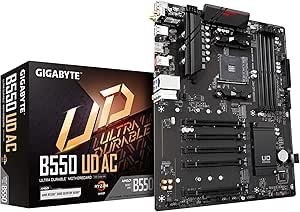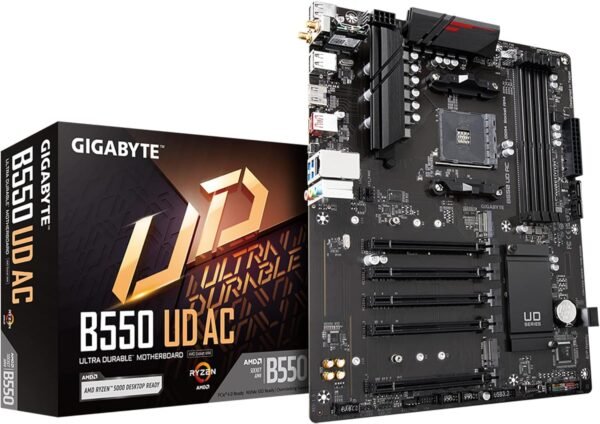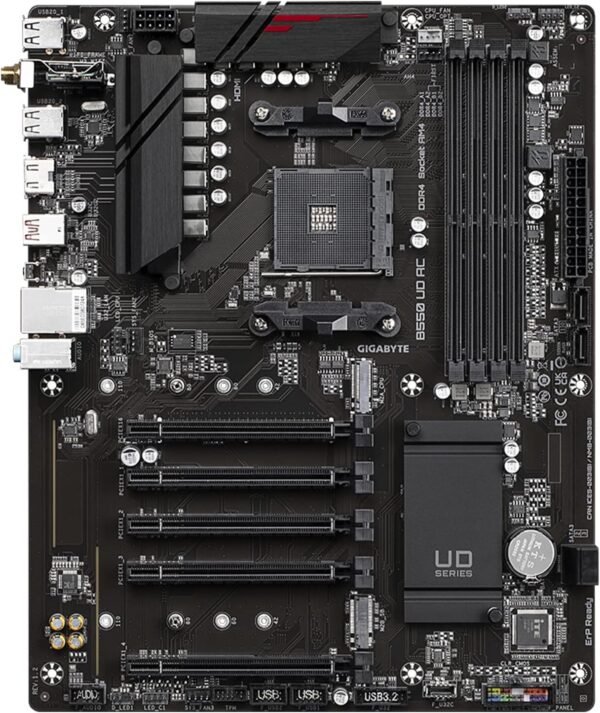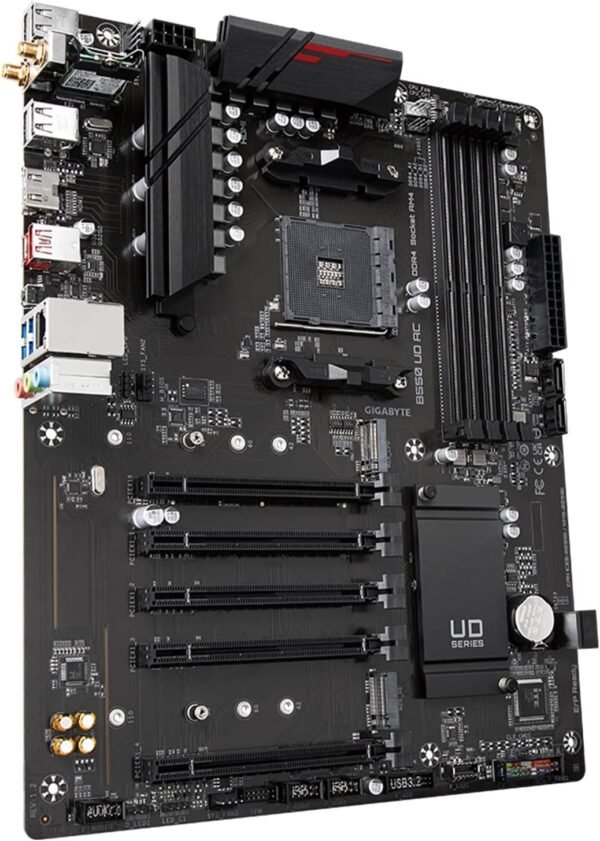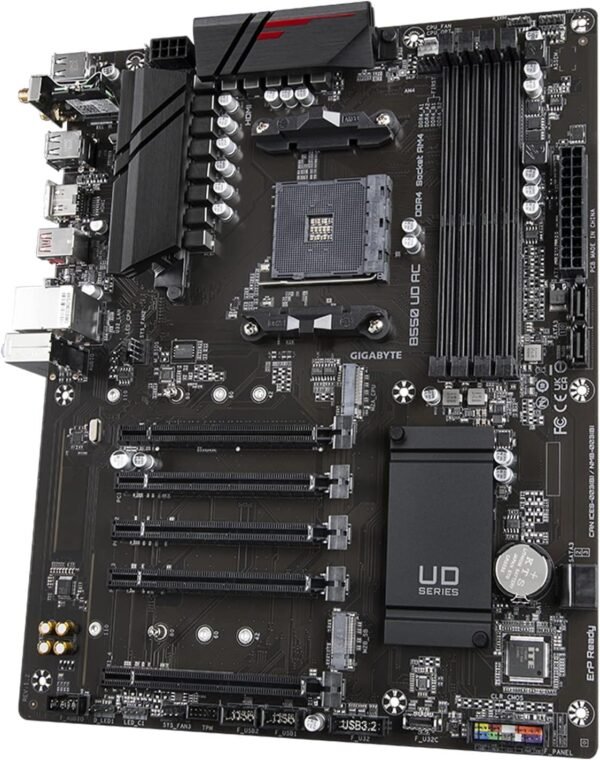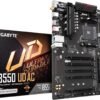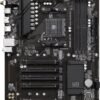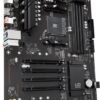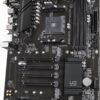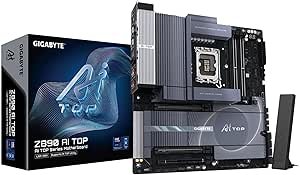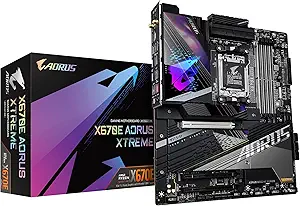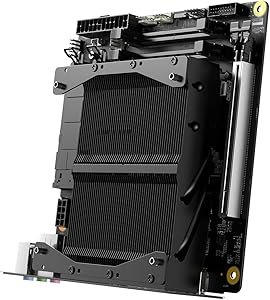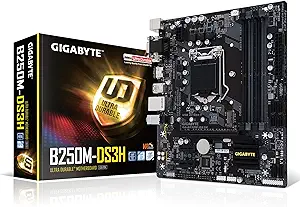Comprehensive review of GIGABYTE B550 UD AC motherboard for AMD Ryzen builds
Comprehensive review of GIGABYTE B550 UD AC motherboard for AMD Ryzen builds
- Exceptional stability under high workloads, ensuring smooth multitasking without overheating or performance drops.
- The Wi-Fi connectivity is solid and reliable, making it perfect for setups where wired connections are inconvenient.
- Easy-to-navigate BIOS interface simplifies overclocking and system customization, even for beginners.
- Dual M.2 slots with fast read/write speeds noticeably improve system responsiveness and boot times.
- The motherboard’s build quality feels durable, offering confidence for long-term use.
As an Amazon Associate I earn from qualifying purchases.
Description
Unpacking the GIGABYTE B550 UD AC (rev. 1.2) Motherboard
Testing out the GIGABYTE B550 UD AC (rev. 1.2) motherboard was an experience that left me both impressed and with a few reservations. With its support for AMD Ryzen 5000 processors and PCIe 4.0 compatibility, this motherboard promised solid performance for gaming and productivity setups. As someone who regularly tinkers with PC builds, I couldn’t wait to see if it delivered on its promises. Spoiler: it mostly did, but let’s dive into the details.
Design and Build Quality
The sturdy power design immediately stood out when I unboxed this product. Its 10+3 phase digital twin power design equipped with Low RDS(on) MOSFETs gave me confidence in its ability to handle demanding tasks. The layout was well thought out, and the dual ultra-fast NVMe PCIe slots were easy to access without feeling cramped. Aesthetically, it’s not flashy, but the inclusion of RGB FUSION 2.0 for customizable lighting added a modern touch.
One thing that caught my attention was the Smart Fan 5 technology, which optimizes cooling performance. I was able to install additional fans effortlessly, and the temperature sensors allowed me to monitor heat levels across different zones of my build. However, I did notice the lack of pre-installed backplate padding, which might be a minor gripe for some users.
Performance and Compatibility
The motherboard’s compatibility with DDR4 Dual Channel ECC/Non-ECC Unbuffered memory was a huge plus. It supports up to 4 DIMMs, which allowed me to add substantial RAM to my setup without any hiccups. Pairing it with an AMD Ryzen 5000 processor worked flawlessly, and the system booted up much faster than I had anticipated, thanks largely to the AMD StoreMI technology.
Running multiple applications and games simultaneously showcased the board’s ability to handle heavy workloads. The Realtek GbE LAN chip ensured stable connectivity, while the Intel 802.11ac Wi-Fi provided decent wireless speeds. Still, I found the Wi-Fi range slightly underwhelming compared to other modern motherboards in the same category.
Key Benefits
- Supports a wide range of AMD Ryzen processors, including Ryzen 5000 and 3000 series.
- Dual ultra-fast NVMe PCIe slots for blazing-fast storage performance.
- RGB FUSION 2.0 adds customizable lighting options to enhance aesthetics.
- Smart Fan 5 technology ensures efficient cooling and prevents overheating.
Areas for Improvement
- The Wi-Fi range could use a boost for better connectivity in larger spaces.
- No pre-installed backplate padding, which might affect installation convenience.
- Some users might find the overall design a bit plain compared to more premium models.
Features That Make It Stand Out
What truly sets this motherboard apart is the inclusion of Q-Flash Plus, a feature that allows you to update the BIOS without installing a CPU, memory, or GPU. This came in handy when I wanted to ensure compatibility with newer hardware. It’s a lifesaver, especially for those who are constantly upgrading their systems.
The fine-tuning features like adjustable LED strips and enhanced cooling options were also notable. The customization options allowed me to create a setup that matched my personal style while ensuring optimal performance.
Competing Products
Comparing this motherboard to competitors like the ASUS TUF Gaming B550-PLUS, I noticed a few differences. The ASUS model offers a more robust Wi-Fi solution and slightly better audio quality. However, the GIGABYTE B550 UD AC holds its own with better NVMe slot accessibility and Q-Flash Plus functionality, which isn’t available on all competing boards.
On the other hand, MSI’s MAG B550 TOMAHAWK offers similar features but at a slightly higher price point. While MSI excels in providing better overclocking capabilities, the GIGABYTE model is a more affordable option for those who need great performance without breaking the bank.
Quality for Price
From a price-to-quality ratio, this motherboard delivers excellent value. It balances performance and essential features without unnecessary bells and whistles that drive up costs. While it’s not the cheapest option available, the combination of advanced cooling, dual NVMe support, and robust power design makes it worth considering for mid-range to high-performance builds.
Would I recommend it? Absolutely, but with the caveat that you might need to pair it with additional Wi-Fi adaptors or better cooling solutions based on your setup. For most users, though, this motherboard provides everything needed to build a reliable and efficient PC.
Additional information
| RAM | DDR4 |
|---|---|
| Memory Speed | 2133 |
| Wireless Type | 802.11a/b/g/n/ac |
| Number of USB 20 Ports | 4 |
| Brand | GIGABYTE |
| Series | B550 UD AC |
| Item model number | B550 UD AC |
| Item Weight | 2.71 pounds |
| Product Dimensions | 13.18 x 10.62 x 3.14 inches |
| Item Dimensions LxWxH | 13.18 x 10.62 x 3.14 inches |
| Manufacturer | GIGABYTE |
| Country of Origin | China |
